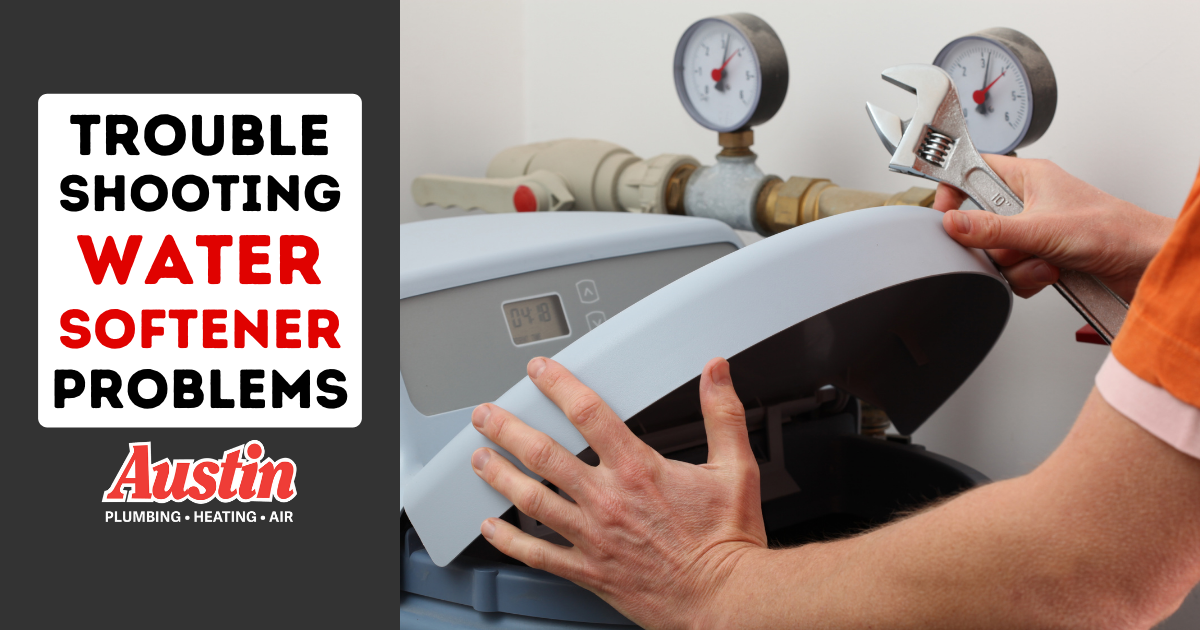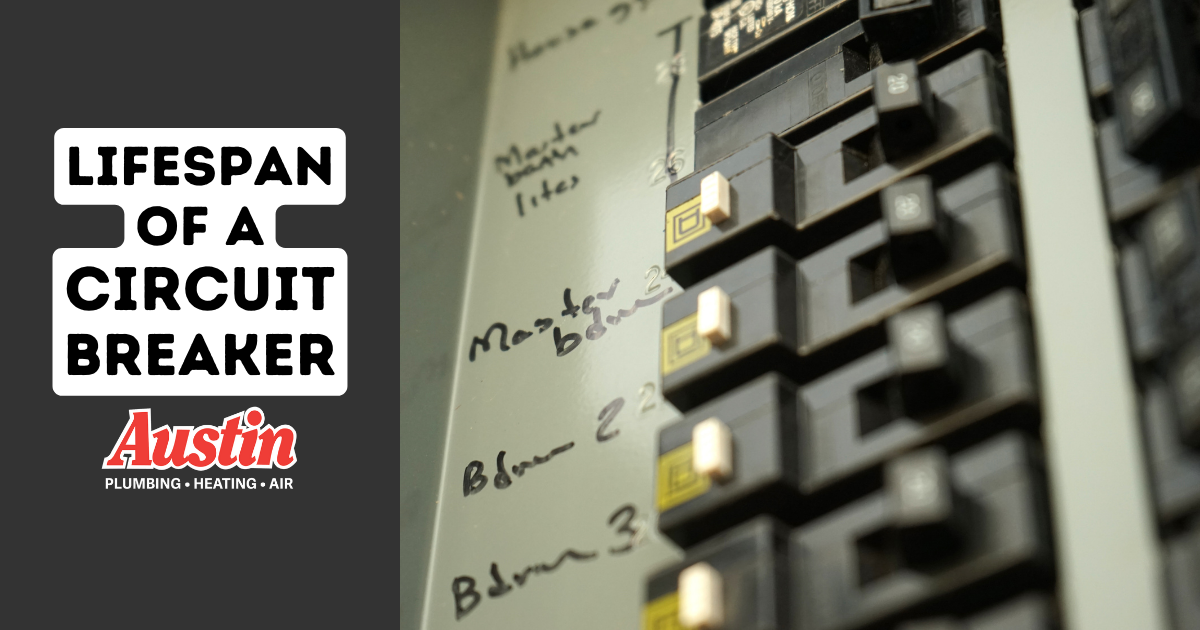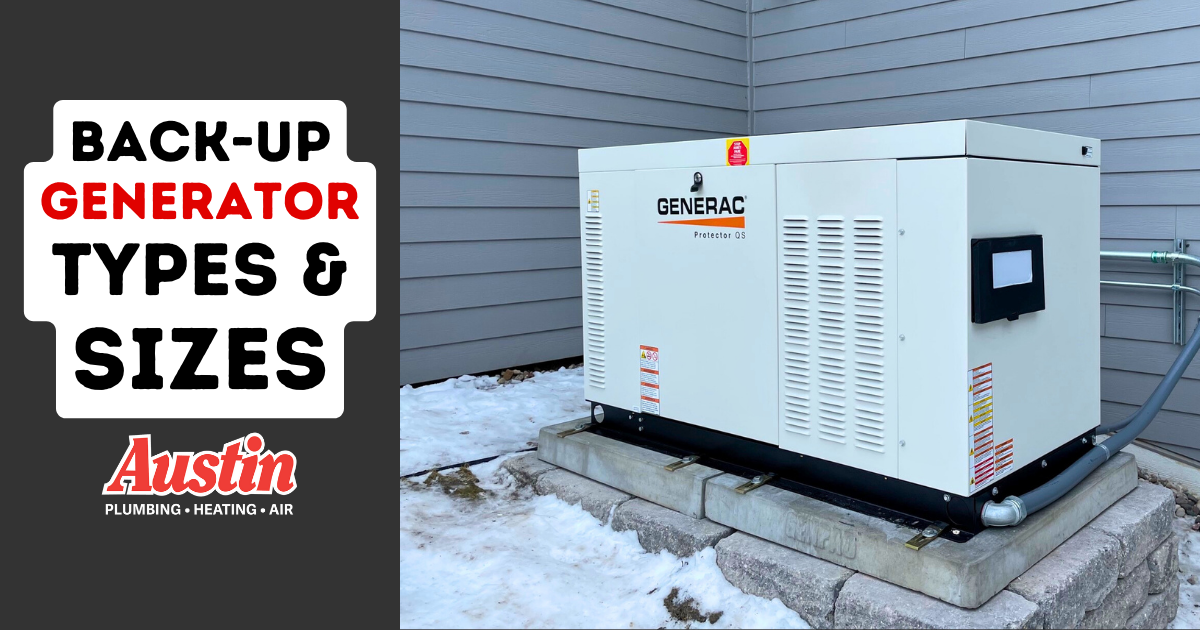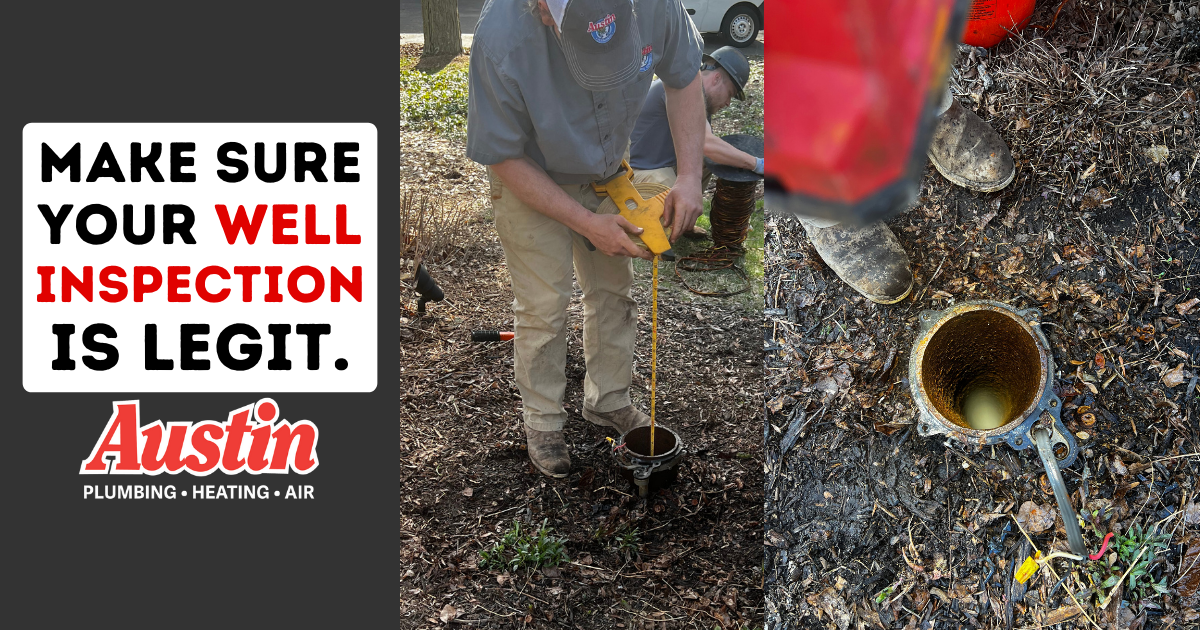The Ultimate Guide to Water Softener Troubleshooting: 20 Tips & Tricks

If you never get to know your water softener, you won’t be able to tell what’s wrong with it–even when you know it’s not working right. Take it from our Master Tradesman.
Do you love the gritty taste of hard water? Do you delight in wearing stiff, crunchy clothing? How about the joys of a plumbing system clogged with limescale?
If you answered “heck no” to all three questions, congratulations: you’re in the right place! Learn to recognize and fix 20 common symptoms of a troubled water softener below.
Psst! This guide assumes you’re already monitoring your water softener’s salt level.
1. The water softener isn’t doing its job.
General, widespread signs of trouble might indicate that your water softener is…well, not actually softening your water at all.
What You May Notice:
– Scale buildup on fixtures and appliances.
– Difficulty lathering with soap and shampoo.
– Skin irritation or dryness after bathing.
– Spots or streaks on dishes and glassware.
– Laundry remains stiff and colors fade quickly.
Troubleshooting Tips:
– Check and replenish the salt levels in the brine tank.
– Inspect and clean the resin tank for sediment buildup.
– Adjust the water hardness setting on the softener.
– Perform a manual regeneration to flush out accumulated minerals.
– Test water hardness before and after the softener.
2. Inconsistent Water Quality
This is usually an issue of regeneration, i.e. something is impeding the appliance’s ability to replenish the media that softens the water.
What You May Notice:
– Irregular or infrequent regeneration cycles.
– Hard water at unexpected times.
– Lower water pressure during regeneration.
– Increased salt usage without a corresponding improvement in water softness.
– Resin tank not refilling adequately during regeneration.
Troubleshooting Tips:
– Check and adjust the timer settings for proper regeneration frequency.
– Ensure the brine tank has adequate salt levels and is not clogged.
– Clean the brine line and valve to facilitate proper brine flow.
– Verify that the brine tank’s float assembly is functioning correctly.
– Inspect and possibly replace the timer motor if it’s faulty.
3. Water Softener Not Using Salt
The salt tablets you put in the brine tank are supposed to soften your water, but that can’t happen if there’s something blocking the tank. We’re not even talking about a foreign object here–the salt itself is often the culprit.
What You May Notice:
– Salt levels in the brine tank remaining constant.
– Hard water despite having sufficient salt.
– Resin tank not effectively recharging.
– Increased salt bridging or mushing in the brine tank.
– Brine tank water remaining clear instead of turning brackish.
Troubleshooting Tips:
– Break up salt bridges to facilitate proper salt usage.
– Verify the brine tank’s salt grid and ensure it’s functioning properly.
– Check for any salt crusts or blockages in the brine tank.
– Adjust the salt dosage setting on the softener if applicable.
– Inspect and clean the brine line and valve for proper flow.
4. Water Softener Running Continuously
Suppose your water softener hasn’t stopped running for hours or days on end. The sounds alone become hard to ignore, and that’s just the beginning of your causes for concern.
What You May Notice:
– Continuous water discharge into the drain.
– Water softener not moving through different cycles.
– Abnormal sounds like constant motor running or water flowing.
– Overly high water usage even when consumption is normal.
– Increased electricity or utility bills without an obvious reason.
Troubleshooting Tips:
– Check and adjust the regeneration cycle settings.
– Inspect the control valve for proper functioning and potential leaks.
– Look for any obstructions or clogs in the drain line.
– Test and possibly replace the control head if it’s malfunctioning.
– Examine the timer settings to ensure they are accurate.
5. Softener Overflowing with Water
A gift you don’t want and didn’t ask for, but it just keeps on giving. Make it stop!
What You May Notice:
– Water overflowing from the brine tank.
– Water accumulation around the base of the water softener.
– Increased water usage without a corresponding increase in regeneration.
– Brine tank not emptying as it should during the regeneration cycle.
– Salt forming a solid block at the bottom of the brine tank.
Troubleshooting Tips:
– Check and clean the brine tank’s float assembly and valve.
– Inspect the drain line for kinks or clogs that may prevent proper drainage.
– Adjust the float assembly to ensure it functions correctly.
– Clear any obstructions in the brine line.
– Monitor the regeneration cycle to observe any irregularities.
6. Brine tank problems abound.
Despite what you may have heard, there is no such thing as tiny beaver colonies that build dams in the brine tanks of unsuspecting water softeners. You are looking in the right place, though.
What You May Notice:
– Crystallized or solidified salt in the brine tank.
– Insufficient brine production during regeneration.
– Salt bridging or mushing in the brine tank.
– Brine tank not emptying adequately during regeneration.
– Water remaining in the brine tank after the regeneration cycle.
Troubleshooting Tips:
– Break up salt bridges using a broom handle or similar tool.
– Clean the brine line and valve to ensure proper brine flow.
– Check the salt grid and ensure it’s functioning correctly.
– Inspect and possibly replace the float assembly if it’s faulty.
– Adjust the salt dosage settings based on water hardness levels.
7. It might be a resin tank problem.
Brine tank didn’t reveal any dirty secrets? Time to move on and check the resin tank.
What You May Notice:
– Resin tank leaks or signs of moisture around the tank.
– Inadequate softening even with a full salt tank.
– Presence of sediment or particles in the softened water.
– Resin beads escaping into the plumbing system.
– Reduced water flow or pressure throughout the house.
Troubleshooting Tips:
– Inspect the resin tank for visible cracks, leaks, or signs of wear.
– Check and repair any damaged resin bed or replace if necessary.
– Perform a resin bed cleaning or regeneration to enhance softening efficiency.
– If resin beads are escaping, consider adding a sediment filter to the water system.
– Test the water before and after the softener to assess its effectiveness.
8. Water Softener Not Removing Hardness
Before you start wondering, “What’s the point of a water softener that doesn’t make soft water?” Don’t give up so easily–investigate with us!
What You May Notice:
– Scale buildup on fixtures and appliances.
– Continuous spotting on glassware despite using the softener.
– Clothes feeling stiff or scratchy after washing.
– Reduced lathering and soap effectiveness.
– Increased detergent usage without improved cleaning results.
Troubleshooting Tips:
– Confirm the resin beads are properly charged with sodium ions.
– Adjust the salt dosage and regeneration frequency to suit water hardness levels.
– Perform a manual regeneration to ensure proper resin bed activation.
– Test the water hardness before and after the softener to assess its effectiveness.
– Clean the resin tank and check for any fouling or sediment accumulation.
9. Low Water Pressure Linked to Softener
Believe it or not, your water softener can affect your water pressure.
What You May Notice:
– Reduced water flow from faucets and showers.
– Longer time to fill appliances like washing machines.
– Reduced water pressure throughout the house.
– Hard water deposits clogging faucet aerators and showerheads.
– Fluctuating water pressure during different times of the day.
Troubleshooting Tips:
– Check for any obstructions or clogs in the water lines or valves.
– Confirm that the bypass valve is fully closed for soft water usage.
– Clean faucet aerators and showerheads to remove hard water deposits.
– Inspect the control valve for signs of clogs or malfunctions.
– Test water pressure at different faucets to identify localized issues.
10. What am I drinking?!
Discolored water is disconcerting for good reason. Your water softener may or may not be to blame.
What You May Notice:
– Brown or rusty-colored water coming from faucets.
– Water discoloration despite having a functioning water softener.
– Unclear or foul-smelling softened water.
– Unusual tastes in the water after softening.
– Stained fixtures and appliances due to discolored water.
Troubleshooting Tips:
– Check for rust or sediment in the resin tank and clean if necessary.
– Inspect the control valve for signs of corrosion or deterioration.
– Perform a thorough regeneration and flush the system to remove impurities.
– Test the water before and after the softener to compare color and clarity.
– Inspect and possibly replace the resin bed if it’s causing discoloration.
11. All my clothes & dishes are grimy!
Like a dog marking the house when its owner is away, a neglected water softener might start to leave residue on everything the water touches–just to let you know it’s not happy.
What You May Notice:
– White residue or film on dishes, glassware, and fixtures.
– Soap scum and residue on shower walls and tubs.
– Laundry appearing dull and feeling scratchy.
– Reduced effectiveness of soaps and detergents.
– Increased frequency of cleaning due to residue buildup.
Troubleshooting Tips:
– Adjust the salt dosage to ensure proper softening.
– Clean the resin tank and check for resin bed integrity.
– Inspect and clean the nozzles and screens in the control head.
– Use a suitable resin bed cleaner to remove accumulated deposits.
– Perform a manual regeneration to flush out excess minerals.
12. Is that a leak?
A leaking water softener needs quick attention.
What You May Notice:
– Water puddles around the base of the water softener.
– Damp or wet areas near the control head or tank.
– Visible signs of corrosion or rust on the unit.
– Increased water bills without a clear reason.
– Water softener shutting down due to a leak detection system.
Troubleshooting Tips:
– Check for loose or damaged fittings and tighten or replace them.
– Inspect the control head and tank for cracks or signs of damage.
– Examine the bypass valve for leaks and replace if necessary.
– Inspect the drain line and connections for any signs of leakage.
– Test the system while bypassed to identify the source of the leak.
13. Something doesn’t sound right.
Water softeners can make some weird noises when they’re in distress. These noises mean something, so pay attention to them.
What You May Notice:
– Grinding, clunking, or unusual sounds during regeneration or water usage.
– Unusual vibration or movement during cycles.
– Clicking or whirring noises from the control valve.
– Changes in pitch or frequency of the usual softener sounds.
– Sounds resembling dripping or running water when not in use.
Troubleshooting Tips:
– Inspect the brine tank for salt bridges or other obstructions.
– Check for loose parts or foreign objects in the tank or control head.
– Tighten any loose bolts or screws on the unit to reduce vibrations.
– Lubricate moving parts as per the manufacturer’s recommendations.
– Check the brine line and air check for signs of damage or blockage.
14. Water Softener Not Dispensing Salt
No need to be salty about it.
What You May Notice:
– The salt in the brine tank remains unmoved.
– Insufficient salt usage despite water softener operation.
– Clear water in the brine tank without a dissolved brine solution.
– Salt clumps or bridges forming in the brine tank.
– Increased salt consumption without a corresponding improvement in softening.
Troubleshooting Tips:
– Break up salt bridges to facilitate proper salt dispensing.
– Ensure the brine tank’s float and components are functioning correctly.
– Check for any salt crusts or blockages in the brine tank.
– Adjust the salt dosage setting on the control panel as needed.
– Inspect and clean the brine line and valve for proper flow.
15. Water Softener Valve Issues
This is another big one to cross off in the process of elimination, since it can have all sorts of problems of its own.
What You May Notice:
– Water softener not moving to different cycles.
– Inconsistent water softening or regeneration cycles.
– Sudden or erratic changes in water flow or pressure.
– Failure of the system to transition between regeneration stages.
– Visible signs of damage or wear on the valve assembly.
Troubleshooting Tips:
– Check the valve assembly for clogs, debris, or damage.
– Inspect the valve motor and switches for proper functioning.
– Test the valve’s movement through different regeneration stages manually.
– Verify electrical connections to the valve for loose or damaged wires.
– Clean and lubricate the valve components to ensure smooth operation.
16. Water Softener Not Cycling
How much do you trust your water softener? Do you feel like you can’t turn your back to it for even a second without it slacking off? You’re not nuts. See below.
What You May Notice:
– Water softener not transitioning through regeneration stages.
– Continued hard water despite the water softener being on.
– Incomplete regeneration cycles, leaving the resin bed unchanged.
– Water softener stuck in one phase of the regeneration process.
– No noticeable change in water pressure during regeneration.
Troubleshooting Tips:
– Check the timer and programming for proper cycle settings.
– Inspect the valve assembly and timer motor for malfunctions.
– Clean and flush the resin tank to remove any obstructions.
– Adjust the salt dosage to facilitate effective regeneration.
– Perform a manual regeneration to see if the system transitions correctly.
17. Water Softener Brine Tank Not Emptying
If the brine tank won’t flush…hey, at least it’s not your toilet.
In all seriousness, there are ways to solve this problem. So don’t stress. First, take a look in the tank and try to verify what you’re seeing.
What You May Notice:
– Brine tank remains filled after a regeneration cycle.
– Excessive water in the brine tank after regeneration.
– Insufficient brine production during regeneration.
– The float assembly is not activating the valve properly.
– Water softener constantly attempting to regenerate due to a full brine tank.
Troubleshooting Tips:
– Check the brine tank’s float and valve for obstructions or malfunctions.
– Inspect the drain line for kinks, clogs, or improper installation.
– Clean and test the float assembly to ensure it moves freely.
– Adjust the float settings to control brine tank water levels effectively.
– Verify the drain connection for proper flow during regeneration.
18. Suspiciously Hard Water–Even After Regenerating
In the case of some water softeners, the perennial signs of water hardness may persist even after a “successful” regeneration cycle.
What You May Notice:
– Water remaining hard or partially softened after a regeneration cycle.
– Reduced lather and soap effectiveness after regeneration.
– Scale buildup on fixtures and appliances immediately after regeneration.
– Resin tank not recharging adequately during regeneration.
– Visible sediment in the softened water after the regeneration process.
Troubleshooting Tips:
– Ensure adequate salt levels and proper regeneration timing.
– Check for resin bed issues or resin tank fouling.
– Perform a manual regeneration to assess the softener’s performance.
– Clean the resin tank and inspect for damage or improper function.
– Test the water hardness before and after a manual regeneration to evaluate softening.
19. Error Codes or Lights Going Off
If you were hoping whatever problem you’re having would just go away on its own, you may be disappointed to find you can no longer leave your water softener to its own devices. Alas, it’s time to take action.
What You May Notice:
– Error codes or warning lights displayed on the control panel.
– Abnormal or unexpected readings on the display.
– Softener shutting down and displaying error messages.
– Difficulty interpreting error codes based on the user manual.
– Frequent system resets without resolution of the issues.
Troubleshooting Tips:
– Refer to the user manual for error code explanations and resolutions.
– Restart the water softener and check for recurring errors.
– Perform a factory reset to see if it resolves the error.
– Inspect electrical connections for any loose or damaged wires.
– Contact the manufacturer for further guidance on specific error codes.
20. This stinks!
When you use water for any purpose, does it have a strange or unpleasant odor? This is yet another symptom that many mistake for a plumbing issue, when in reality it may well be coming from the water softener.
What You May Notice:
– Unpleasant or unusual smells from the softened water.
– A sulfur-like or rotten egg smell in the water.
– A musty or mildew-like odor from the water.
– Unusual taste in the water even after softening.
– Smelly water causing discomfort or reluctance to use it.
Troubleshooting Tips:
– Check for bacterial growth in the brine tank and clean if necessary.
– Inspect the anode rod in your water heater for potential issues.
– Perform a thorough regeneration and flush the system to remove impurities causing the smell.
– Verify that the drain line and valve are functioning correctly to prevent stagnant water.
– Consider using activated carbon filters to eliminate odors in the water.
What to Do if Your Water Softener Still Won’t Work
Considering how comprehensive this guide is, if your problem remains unsolved, it’s time to get a professional involved. Why not call the experts? Call 262-367-3808 and Team Austin will happily send one of our technicians to fix your water softener right away.




